
Editors’ Note: Mary D. Sheriff, one of the most brilliant and beloved scholars of eighteenth-century European art, died on October 19, 2016. Among her last essays was a playful and erudite encounter with Casanova’s memoirs, seen through the prism of eighteenth-century European painting. She originally wrote it for the catalogue to the exhibition Casanova: The Seduction of Europe, connecting paintings in the show with episodes from Casanova’s erotic intrigues. This explains the choices behind some of the artworks she discusses. Due to late changes in the exhibition’s checklist, however, Mary’s essay did not appear in the catalogue. We wanted to publish it in Journal18 so that her vivid insights into Casanova’s libertine text and like-minded artworks could be shared with our scholarly community. The essay is yet another testament to Mary’s unique talent for bringing eighteenth-century art to life and for making us think about it in a new way, as well as her own seductive powers of analysis and wordplay. We are grateful to Keith Luria and Melissa Hyde for making final revisions to the essay and for permitting us to publish it in Journal18.
In all its splendor and misery, love dominates the life of Giacomo Casanova (1725-1798). As the hero of the memoirs he started writing in 1789, when he was sixty-four and living in exile in Bohemia, Casanova performs as ardent lover, callous libertine, amiable friend, and suitor wronged. His amorous adventures begin at the tender age of eleven, and by story’s end he has experienced every feeling associated with love from intense longing to painful despair. Affairs numbering well over one hundred enliven the History of My Life. Their frequency and diversity set Casanova apart from contemporaries, yet his experiences exemplify concepts and practices current during his life, and he draws on a well of shared convention in representing them. Artists who were Casanova’s contemporaries—many of whom figure in the exhibition Casanova. The Seduction of Europe—also drew on these concepts and practices in works that explored the amorous and erotic life of the eighteenth century.[1] The pictorial genres most associated with amatory subjects range from myth, allegory and pastoral to so-called boudoir scenes and voyeuristic vignettes. Though often highly charged with eroticism, the “adult” content of such images tended to be lyrical, allusive or playful, leaving more to the imagination than Casanova’s exuberantly explicit accounts of his venereal exploits.
Like a novelist, Casanova weaves complicated plots involving obstacles to overcome, deals to be made, revenge, skullduggery, and coincidence. He calls himself a painter, coloring his textual tableaux with emotion and rendering them in striking detail. “Those who think I lay on too much color when I describe certain amorous adventures in detail will be wrong, unless, that is, they consider me a bad painter altogether.”[2] His tell-all manner sets him apart from an artist like Jean-Honoré Fragonard, whose The New Model (c. 1770-1773) invites viewers to project on a blank canvas their imagined endings to a preliminary encounter. In this suggestive scene, a chaperone bares a model’s breasts while the painter raises her skirt with his maulstick.[3] By contrast, even when Casanova names sexual acts euphemistically, he offers details that render his experiences apprehensible, and rarely does he urge the reader’s imagination to wander freely. Given the particulars in his History, we may wonder how he was able to recall the details enlivening his account.[4] Likely there is something invented or borrowed about his reminiscences in a text written to dispel the ennui of exile. For Casanova writing offered its own form of “vicarious jouissance,” and his preface records that in “remembering the pleasures I enjoyed, I renew them.”[5] Some of those pleasures recall activities common to the love games of the privileged, as well as the paintings that captured them.
During Casanova’s time, gallants paid court to ladies, rakes dallied with wayward wives, and coquettes flirted with everyone. Women achieved celebrity as actresses, dancers and singers, and some lived the good life as courtesans whom rich men supported. Inside performance spaces, love held sway in theater boxes and corridors, while at masquerades disguises concealed unsanctioned dalliance. Adding spice to love were the pleasures of music, food, wine, and wit, and in affairs of the heart love letters were written, gifts given, and portraits exchanged.
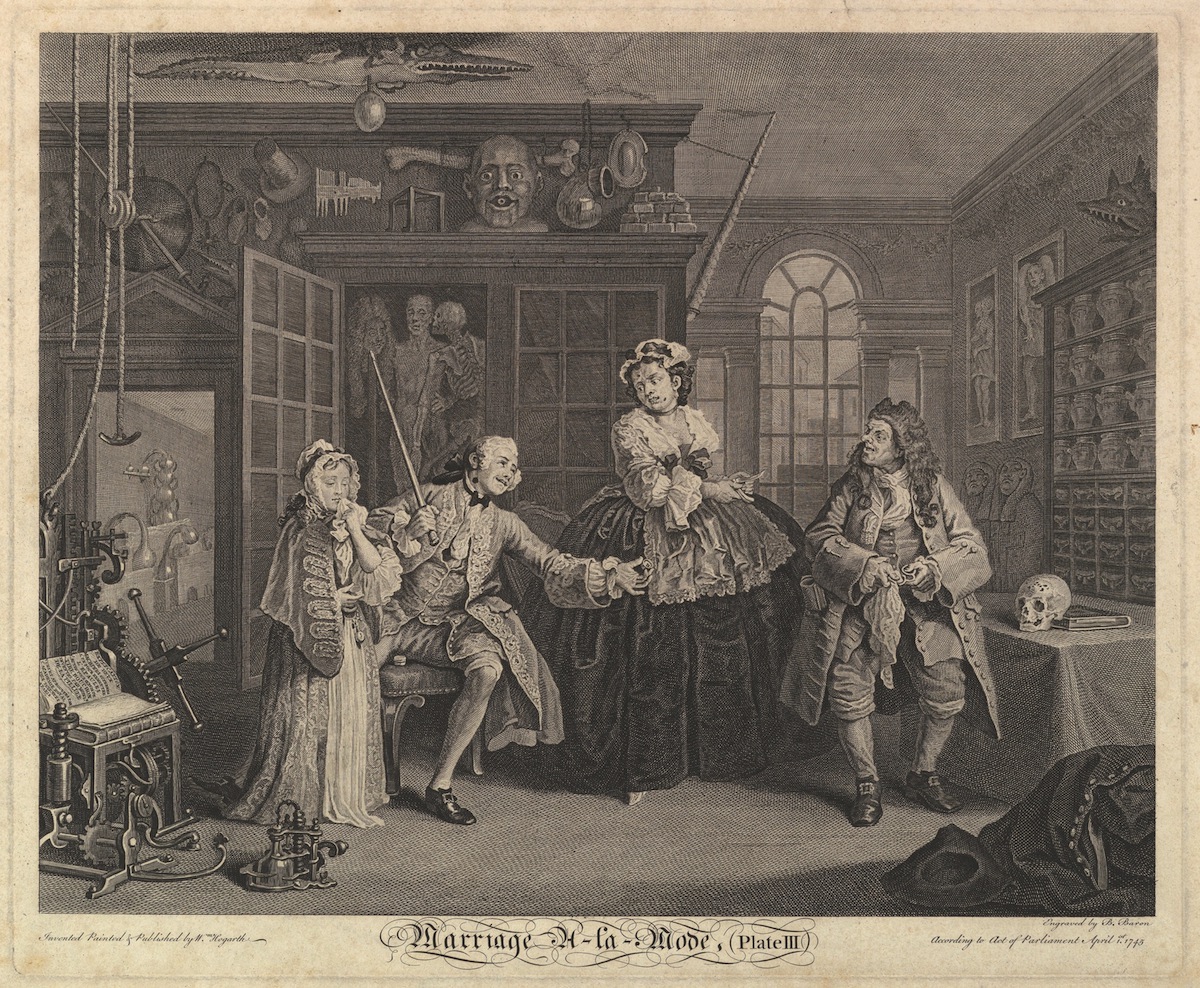
Fig. 1. Bernard Baron after William Hogarth, Marriage à la Mode, Plate III: The Inspection, 1745. Etching and engraving, 39 x 47 cm. Gift of Sarah Lazarus, 1891. Metropolitan Museum of Art, New York. Image courtesy of the Metropolitan Museum of Art.
While secluded spots on estates accommodated trysts of all sorts, love also bloomed in public gardens, as Pierre-Antoine Baudouin evokes in his moonlit Evening at the Tuileries (c.1767-1769).[6] But what sort of love do we see as a woman pulls on her glove in rising from a bench? Her fluttering drapery indicates a hasty retreat as she accepts a coin for her services. The man’s disheveled chemise, unfocused look, and overall lassitude mark the aftereffects of sexual congress, and he lingers while the woman hurries off, perhaps to another client. Located adjacent to a theater, the Tuileries garden was a public space where prostitutes plied their trade. An even more famous site was the Palais Royal, where business was transacted until prostitutes were rounded up and herded off.[7] In such spaces, parents and procurers profited from the commerce in children. Our sensibilities may recoil from Casanova’s account of purchasing the right to deflower a virgin, yet these practices marked the enlightened century.[8] In the engraving titled “The Inspection” from the series Marriage à la Mode (Fig. 1), William Hogarth shows a debauched husband who apparently took advantage of such commerce by bedding a girl scarcely out of childhood. In the scene, the husband has brought the young woman to a French doctor (M. de la Pillule); the older woman may be a bawd or the girl’s mother. Both she and the husband have black spot patches, indications of venereal disease, while the husband and his child mistress hold pillboxes. Mercury pills were the only known treatment for the ailment, and Casanova, who suffered periodic bouts of syphilis, took them for his infections. Never denying his participation in tawdry practices, Casanova asks readers to forbear all: “I begin by declaring to my reader that, by everything good or bad that I have done throughout my life, I am sure that I have earned merit or incurred guilt.” At the same time, he boasts about living “truly independently of everything that could place limits on my inclinations,” casting himself as an amoral libertine.[9]
Youth
Casanova experienced his first love with Bettina, the sister of his tutor, Abate Antonio Maria Gozzi. He comes to room with the Gozzis in Padua after suffering a lice infestation at a boarding house. Casanova has just reached puberty at the age of eleven, and Bettina, who is tasked with tending to his ablutions, is several years older. Both are beyond the age of consent, set between nine and twelve years.[10] The encounter begins as Bettina sees to her duties. At first Casanova finds her “childish caresses” innocent, if troubling. She soon provokes a “voluptuous feeling in me, which did not cease until it could not become greater.”[11] Thus Casanova recounts his first ejaculation at the hands of a woman. But pleasure gives way to shame when Bettina ceases to visit him. He falls into the “blackest melancholy,” which intensifies in her absence.[12] That Bettina apparently gives her favors to another infects Casanova with the “poison of jealousy,” which turns to impatience when she agrees to visit him again, and then to fury when she does not appear. When his rival mistreats him in her presence he goes into a fury, wanting to strangle Bettina. Deceived and humiliated, he fantasizes about poisoning Bettina and her lover.
In this first affair, Casanova experiences the emotions that made sexual desire love’s most perilous form. So dangerous was concupiscence that when Antoine Coypel lectured to students of the Académie Royale on the best way to represent love, his discussion turned into a warning. Love, he reminded them, leads to “the most dangerous precipices… it reigns in the heart as a superb tyrant, its blind fury can lead it to trouble all the passions that follow and surround it: uneasy desire, fear, suspicion, the sad furors of jealousy, hate, anger that a rival inspires.”[13] In Casanova’s case first love did more than raise troubling emotions. It kindled a desire for sexual pleasure that became his “ruling passion.”
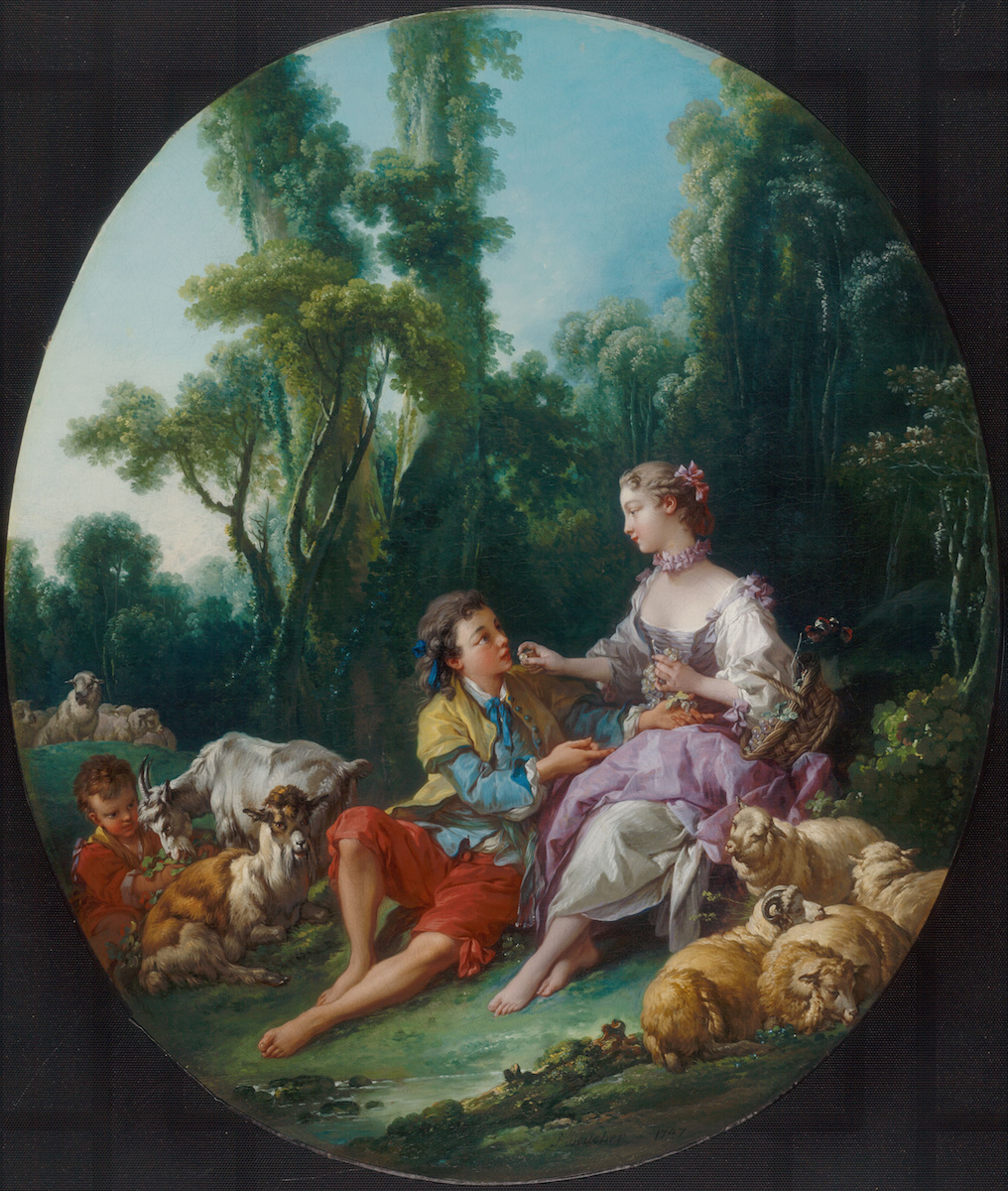
Fig. 2. François Boucher, Are They Thinking of the Grape?, 1747. Oil on canvas, 80.8 x 68.5 cm. Art Institute Chicago. Image in the public domain. Source: Wikimedia Commons.
As Bettina seduced Casanova, so a young woman provides a similar experience for the shepherd in François Boucher’s Are They Thinking of the Grape? (Fig. 2).[14] Visual innuendo here creates a witty eroticism based on pretended innocence. With his smooth complexion and open mien the shepherd seems youthful and inexperienced. He looks up to the shepherdess who controls the seduction, holding a grape to his expectant mouth and letting others fall to his waiting hand. The painting evokes Ovid’s story of Bacchus transforming himself into a bunch of grapes to enter the nymph Erigone through ingestion.[15] In Boucher’s image, as in Casanova’s first amorous encounter, the action is reversed and the woman becomes the seducer.
It is in Venice, however, that Casanova, who has assumed the clerical title of abate or abbé, takes things into his own hands. His account reminds us that clerical misadventures were the stuff of obscene eighteenth-century literature and art.[16] He reports keeping by his bedside one of the most famous examples of libertine novels of the period, Histoire de Dom Bougre, Portier de Chartreux (1741).[17] Claude-Louis Desrais, a student of Casanova’s brother, Francesco, matches the explicit sexuality of Dom Bougre in his images of monks at play.[18] It was left to Johann Zoffany, however, to comment ironically on the libidinous monk in a self-portrait (1779) that shows him donning a friar’s habit. Although palette and brushes identify him as an artist, these are rendered in shadow. More highly lit is his rosary, pinned on the wall between an image of Titian’s Sleeping Venus and a condom. On a high shelf, a skull reminds viewers that pleasure is fleeting, while a wine carafe situated above the condom suggests an erection. As Zoffany assumes his disguise, he puts his hands through the cloak’s cowl. Ironically mimicking a gesture of benediction with an expression that hints at saintly ecstasy, his portrait plays on the religious and sexual connotations of ravishment.[19]
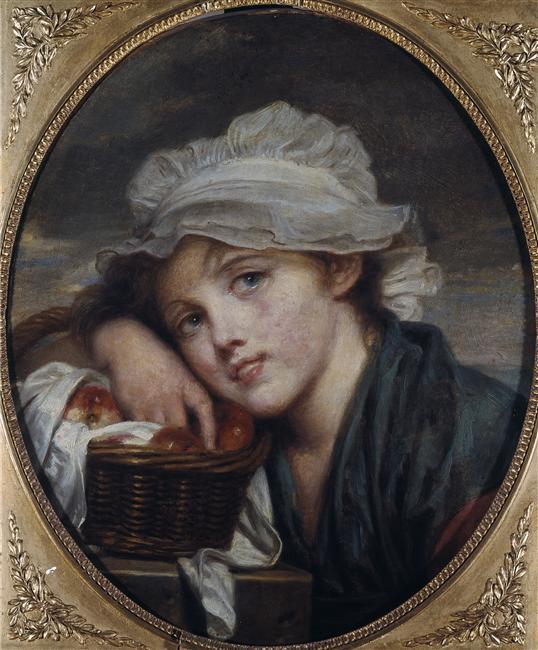
Fig. 3. Jean-Baptiste Greuze, Le tendre désir, c. 1769. Oil on canvas, 40 x 32 cm. Musée Condé, Chantilly. Photo © RMN-Grand Palais / Agence Bulloz. Source: art.rmngp.fr.
Zoffany masquerades as a libidinous cleric, but Casanova shows himself to be the real deal. After falling in love with another woman, Angela, who refuses him the smallest liberties, he finds relief when, in 1741, he visits the Countess of Montereale’s country house and meets Lucia, the caretaker’s fourteen-year old daughter. He recalls that her innocence inflamed his desire, deeming her an “angel incarnate who could not fail to become the victim of the first libertine who made an attempt on her.”[20] Yet it is unlikely that he recounts observations made when he was sixteen and Lucia two years younger. He writes as if the age difference was much greater, and it is the old libertine rather than the randy teenager who reminds readers of the fascination with women on the cusp of sexual awakening—a phenomenon that found visual expression in the popular “Greuze girl” paintings (Fig. 3).[21]
The encounter also appears to remind the aging memoirist of adolescence. The intimacies Lucia allows him are limited, and so Casanova falls back on “the schoolboy’s remedy.” His commentary, however, reveals more than a schoolboy’s knowledge of the dangers of onanism, which physicians saw as leading to a diseased body and mind. Masturbation, Casanova explains, “disarms by exhausting potency at the moment but in irritating nature provokes her to vengeance which she takes by redoubling the desires of the tyrant who has subdued her.”[22] Nature’s revenge was to smite the self-pleasurer with an insatiable desire for orgasm, which characterized the disease known as satyriasis, a malady brought on by both masturbation and overindulgence in sexual intercourse. Sufferers found that the disease demanded repeated performance of an act that ordinarily quelled desire.[23] Did Casanova late in life come to implicitly understand his “ruling passion” as a form of disease allied to his bouts of melancholia?
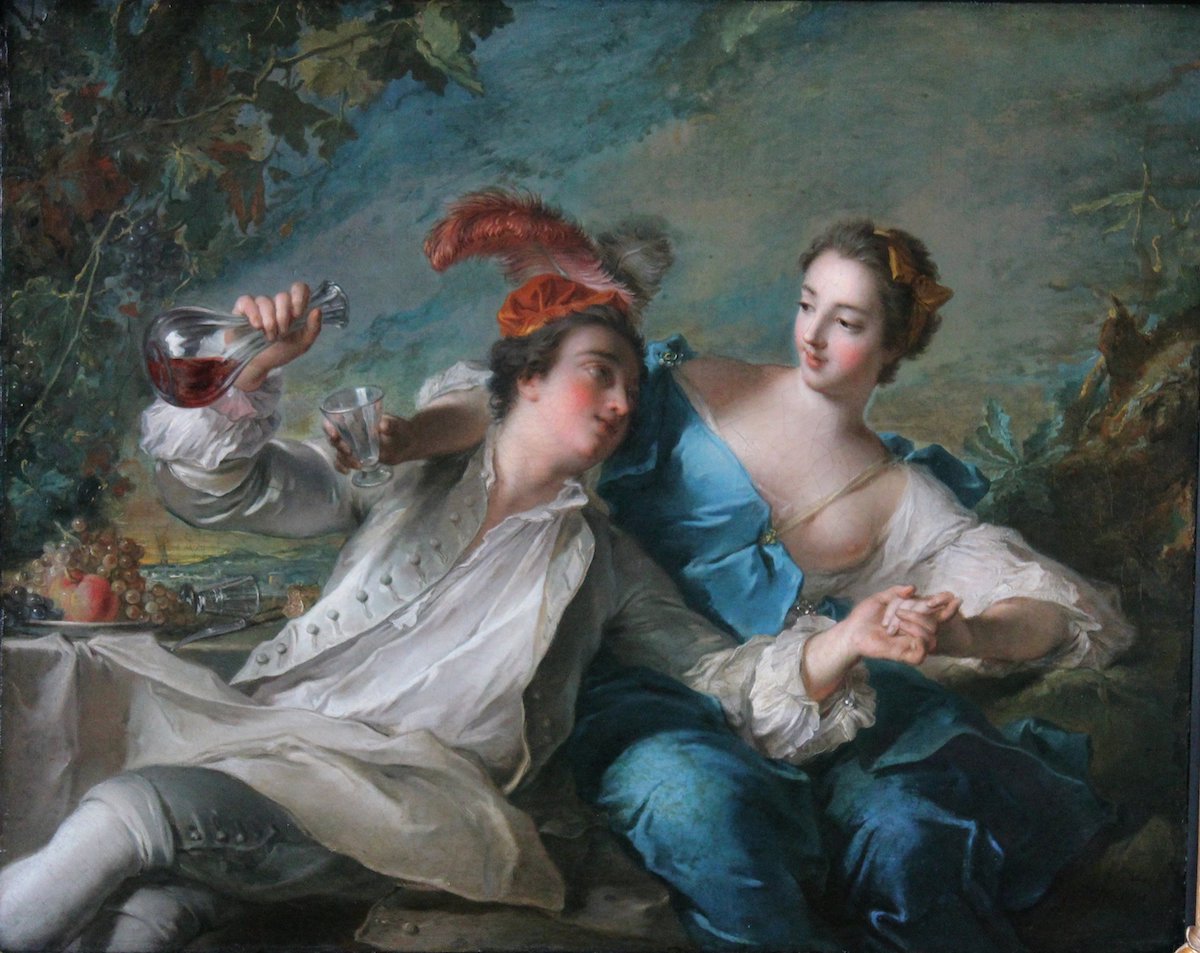
Fig. 4. Jean-Marc Nattier, The Lovers, 1744. Oil on canvas. Alte Pinakothek, Munich. Image in the public domain. Source: Wikimedia Commons.
In returning to Venice and his story, Casanova continues his erotic education with Angela’s friends, the sisters Marta and Nanetta. The episode is the first of many in which imbibing is a prelude to lovemaking. Casanova shares with Nanetta and Marta his bottle of Cyprus wine, which “went to their heads.”[24] These tipsy pleasures Jean-Marc Nattier represented in The Lovers (Fig. 4). Seated in a grape arbor, a young man with his clothes awry and sporting a silly hat pours wine into the glass of a young woman whom he embraces. These tipplers, however, may be a bit more exalted than Casanova and his friends. In setting and action, Nattier’s couple recalls Noël-Nicolas Coypel’s earlier depiction of Venus and Bacchus (1726), and thus his wine-besotted lovers may seem an updated, earthly version of the divinities.[25]
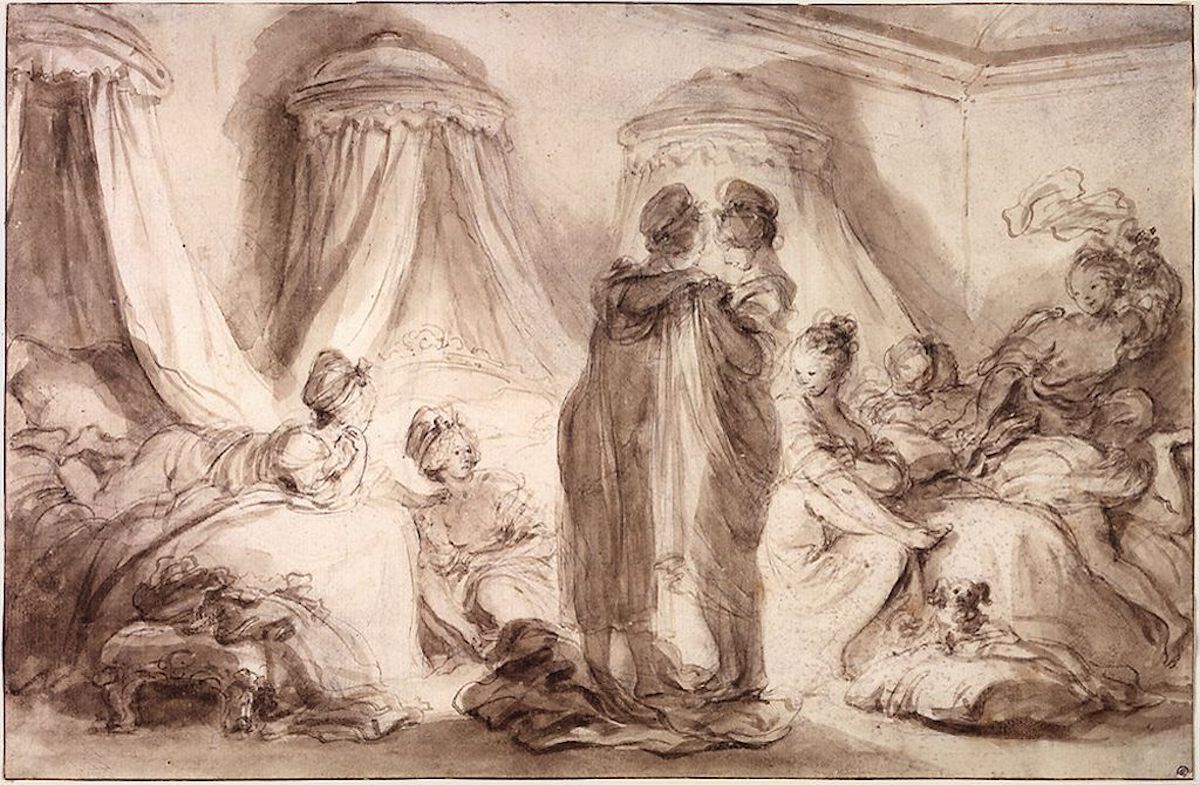
Fig. 5. Jean-Honoré Fragonard, The Servant Girls’ Dormitory, c. 1770. Brown wash over graphite, 24 x 36.8 cm. Harvard Art Museums/Fogg Museum, Gift of Charles E. Dunlap. Image courtesy of Harvard Art Museums.
As Casanova and his companions lose their inhibitions, they share innocent kisses, which soon “became ardent and began to kindle a fire.”[26] Wine also loosens tongues, and the women reveal that when Angela sleeps with them, she covers Marta with kisses, calls her “dear Abate,” and satisfies her carnal desires with Marta acting as her husband. They assume Casanova knows what girls do in bed together, and the aging memoirist’s worldly-wise answer comes from retrospection: “Certainly my dear Nanetta, Everyone knows about these little games.”[27] Everyone included artists such as Fragonard, who rendered playfully the erotic pull between women in The Servant Girls’ Dormitory (Fig. 5). François Boucher also knew about these “games” when he depicted Ovid’s story of Zeus making love to Callisto in the guise of Diana (Fig. 6). Such images are commonly interpreted as being made for men who can imagine either replacing one of the women or having them both. Yet the discussion of what women do together suggests that such works could also arouse female desire.[28]
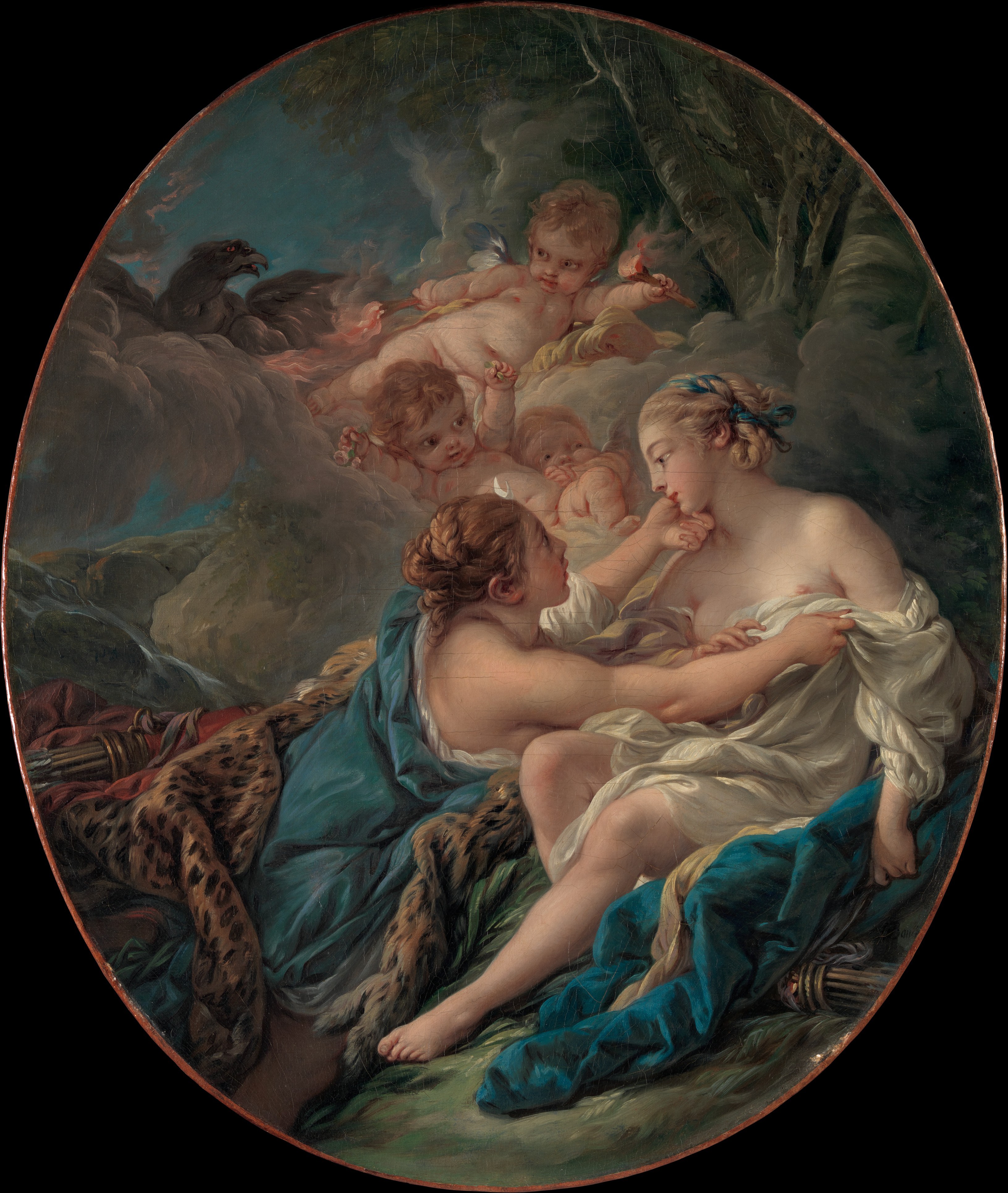
Fig. 6. François Boucher, Jupiter, in the Guise of Diana, and Callisto, 1763. Oil on canvas, 64.8 x 54.9 cm. Metropolitan Museum of Art, New York. Image courtesy of the Metropolitan Museum of Art.
Unlike Casanova, moralists did not see the erotic play between women as a mere trifle. They feared that sisters or servants would seduce girls and transform them into “tribades,” which was the name given to women who preferred women.[29] The possibility haunts Diderot’s 1767 Salon commentary on Baudouin’s Bringing the Bride to Bed (Fig. 7):
Baudouin, do me the favor of telling me in what corner of the world this scene is set. Certainly not in France; one would never see a well born, properly educated young girl half nude, one knee on the bed, being solicited by her husband in the presence of her women, who are pulling at her.[30]
He goes on to say that the women, whom he calls “unworthy creatures,” would be indecent even without their “wretched, base, and dishonorable” expressions. This commentary leads to Diderot’s denunciation of licentious art. Erica Rand has drawn attention to the many contradictions in Diderot’s account and points to one of the maids nuzzling the bride’s neck suggestively.[31] Indeed, the women appear to be taking over, preparing the bed, extinguishing the candles and fanning the flames of her actual (and metaphoric) fireplace. The groom in Baudouin’s painting seems almost to be begging for a place among them.
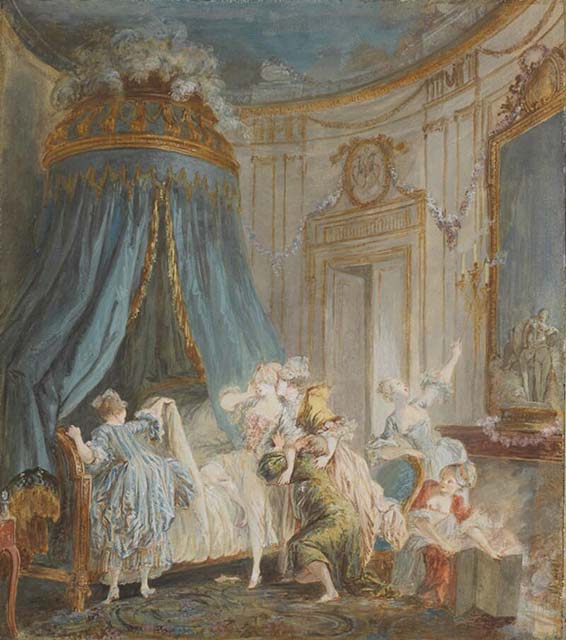
Fig. 7. Pierre-Antoine Baudouin, Bringing the Bride to Bed, 1767. Gouache on paper, 36 x 31.7 cm. Musée des Beaux-Arts du Canada, Ottawa. Image in the public domain. Source: Wikimedia Commons.
Although Casanova is no swooning husband, he contrives to get in bed naked with both Nanetta and Marta. After achieving climax with Marta, he turns to Nanetta: “I began by delighting her soul, at the same time assuring myself that she was as untouched as her sister; and I continued the same treatment until affecting a most natural movement without which I could not have crowned my labors, she helped me to triumph.”[32] While Casanova focuses on his “triumph,” he does not entirely neglect that of his partners. He describes how Marta is aroused at the sight of Nanetta experiencing pleasure and notes that Marta, as the first to be aroused, encouraged Nanetta to imitate her. Far from denying women a libidinous gaze, he sees their desirous looks as working to his advantage.
In contrast to Casanova’s dalliance with Nanetta and Marta is the story of a more lasting attachment, which begins when he is traveling. In a coach he meets Lucrezia Castelli, with whom he has a torrid affair. She is the first woman who fully engages his heart and initiates him into “the mysteries of love.” In their relationship declarations of love are proved in amorous combat: “It was now my part to invite my fair enemy to begin a battle whose tactics could be known only to love, a combat which enchanting all our senses, could have no fault, but that of ending too soon; but I excelled in the art of prolonging it.”[33]
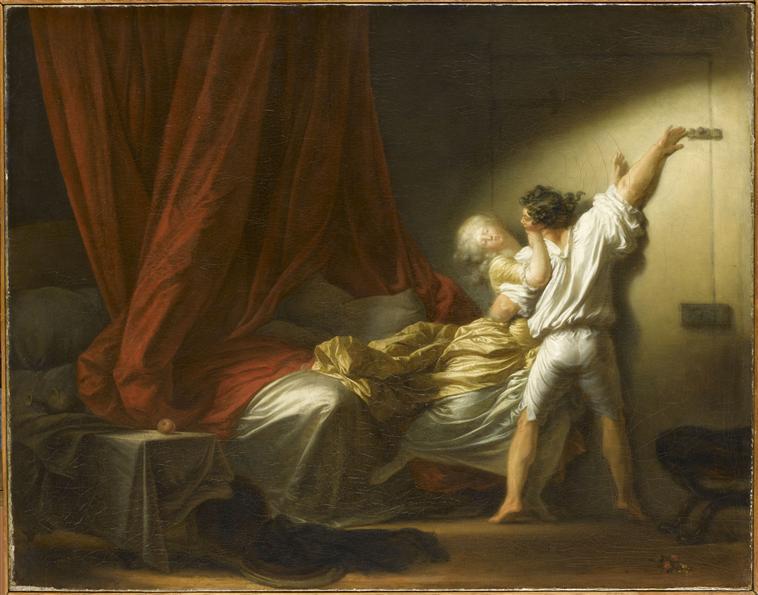
Fig. 8. Jean-Honoré Fragonard, The Bolt, c. 1777. Oil on canvas, 71 x 92 cm. Musée du Louvre, Paris. Photo © RMN-Grand Palais (Musée du Louvre) / Stéphane Maréchalle. Source: art.rmngp.fr.
The metaphor of sexual relations as combat was longstanding. After “defending” herself from the man’s “attacks,” the woman “surrendered” and the man “conquered” or “triumphed.” Fragonard represented this battle in images such as The Feigned Resistance (1770-1773), but his best-known example is The Bolt (Fig. 8). There the overturned chair and tousled bed show the results of a preliminary skirmish and the passion that ignited it. The young man, already partially undressed, grabs the woman with his left arm as he reaches up to bolt the door. Still fully clothed, the woman tries to repel the attack: she too reaches toward the bolt and pushes herself away from his embrace. We do not know if her resistance is real or feigned as a spur to desire and thus a prelude to capitulation. In other works, such as The Desired Moment (c. 1770), Fragonard shows the preferred end of the struggle, as the woman gives herself to the man’s embrace and all concludes in mutual satisfaction.[34]
Prime of Life
Casanova is twenty-eight in 1753, when he falls in love with the fourteen-year-old Caterina Capretta, whom he eventually seeks to wed. Although women of Caterina’s age did marry men considerably older, her father will not give his blessing to a suitor lacking status and wealth. Taking matters into her own hands, Caterina tells Casanova, “I am young, but not too young. I am certain, my dear, that I could be your wife.”[35] The couple “marry … before God” (a “clandestine marriage”), and this melding of hearts gives Casanova license to make love.[36] So smitten is Caterina that she begs Casanova to make her pregnant so her father will agree to an official wedding. Instead, her father sends Caterina to a convent. While she is there the couple exchange letters, and Casanova visits her from time to time. Although he continues to love his “wife,” he becomes enamored of another woman, a nun, who resides in the same convent and who, in a twist of fate, introduces Caterina to “the mysteries of Sappho.”[37]
The nun in question Casanova designates as M.M. to conceal her identity, and she has it all—birth, beauty, and intelligence. Moreover, he imagines she is a virgin. The affair is filled with intrigue, as they both travel masked when they meet clandestinely at her casino.[38] Their first encounter does not lead to intercourse because M.M. changes the rules of amorous combat: “The strength of [her] two hands repelling the attacks of a respectful and tender lover who is at the same time bold and insistent, played very little part.” Instead, “the weapons she used to restrain my passion […] were arguments delivered in words as amorous as they were energetic.”[39] This match of wits inflames desire but leaves it pleasurably unsatisfied. Yet if intercourse was absent from this lovemaking, it enters the relation subsequently, and rather theatrically. And his retrospective account echoes the encounters found in some of the century’s best-known erotic novels.
M.M. has in the boudoir of her private love nest a library with a few choice books, including, as Casanova tells us, “all that the wisest philosophers had written against religion and all that the most voluptuous pens have written on the subject which is the sole aim of love.” He characterizes these volumes as “seductive books, whose incendiary style drives the reader to seek the reality, which can alone quench the fire he feels running through his veins.” The books are ornamented with lascivious engravings; he singles out, in particular, the illustrations in M.M.’s copy of the Portier des Chartreux (1741). M.M. intervenes in Casanova’s contemplation of them just in time to prevent his “schoolboy masturbation.”[40]
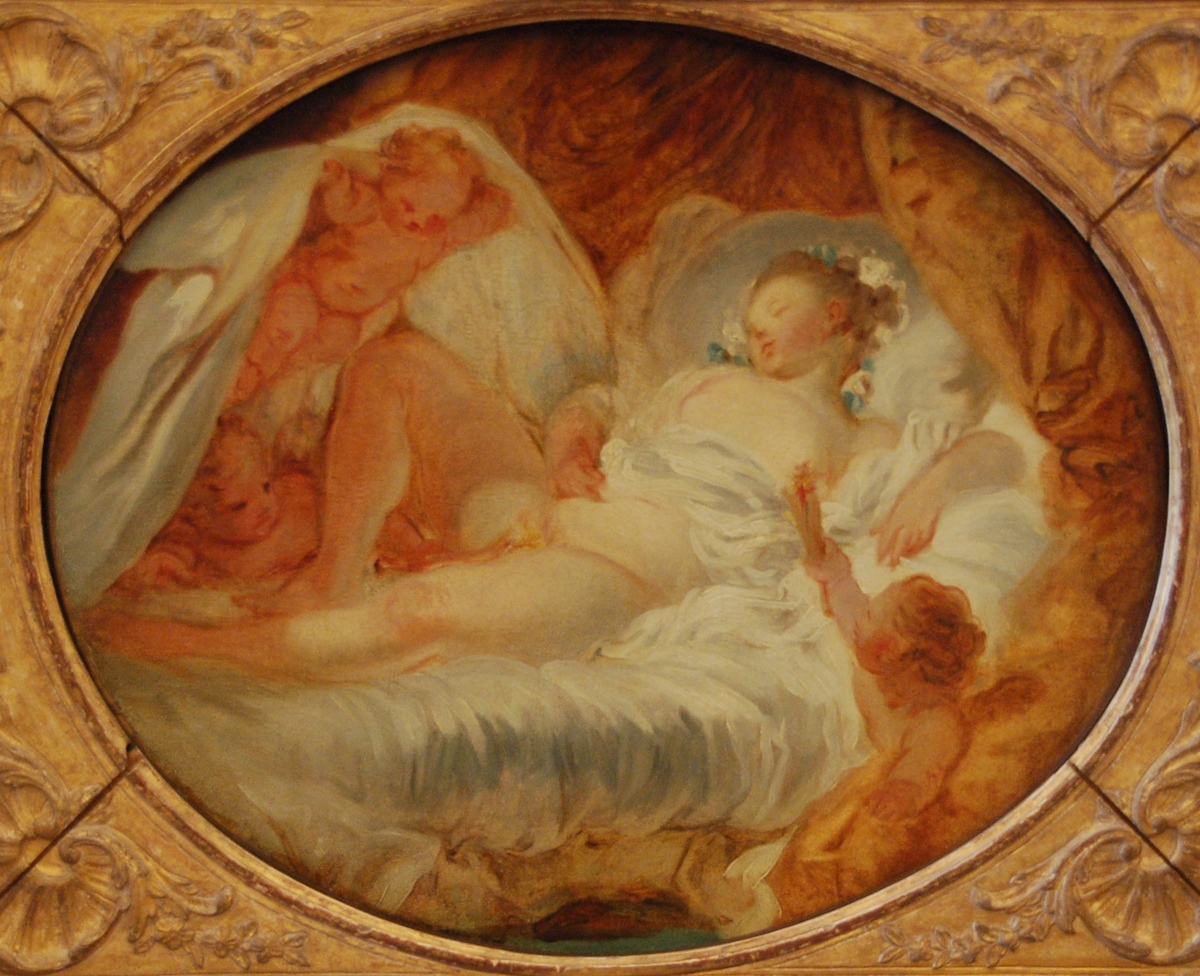
Fig. 9. Jean-Honoré Fragonard, The Match to a Powderkeg, before 1778. Oil on canvas, 37 x 45 cm. Musée du Louvre, Paris. Image in the public domain. Source: Wikimedia Commons.
At the beginning of the affair, Casanova does not know that M.M. has a protector: François Joachim Pierre de Bernis, French ambassador to Venice. After confessing to Bernis that she has taken another lover, M.M. finds that her patron approves, but asks to watch their lovemaking from a peephole. Voyeurism was often represented in eighteenth-century texts and images. Casanova indulges in the pleasure several times, and Fragonard invites the covert look in The Match to the Powderkeg (Fig. 9), which features a sleeping woman whose chemise has slipped both up and down. Sleep ensures she is unaware of our presence as a trio of Erotes ignites her desire literally and metaphorically. The oval canvas and tight framing creates the impression of looking through a keyhole.[41] Fragonard’s image, however, lacks the exhibitionism of the performance staged for Bernis. The lovers carefully choose their postures so he has a good view of the action, and Casanova parades naked wearing only a kerchief made up as a turban. To increase the exoticism they perform on a Persian carpet. Such scenography invokes the harem, a fantasy site for Europeans, and verifies Casanova’s self-image as he first savors the idea of making love to a bride of Christ: “I was to infringe on the rights of an omnipotent husband, snatching from his seraglio the most beautiful of his sultanas.”[42]
Shortly after the performance, Casanova and M.M. exchange love tokens. M.M.’s gift is a snuffbox. But what might we find when we open the box? Many had secret compartments, as did the one M.M. presented to Casanova: “You will see me as a nun if you remove the bottom of the snuffbox lengthwise and if you push the corner of it you will see a hinged cover open.” This action reveals the image of M.M. naked on a black silk mattress. In return, Casanova gives her a medallion representing the Annunciation, with a secret device that made the image spring up to reveal his portrait.[43]
Casanova carries on his affair with M.M. for months, and eventually Bernis, and then C.C., join them in their lovemaking, which is inventive, to say the least. But in typical fashion, Casanova seeks other adventures and his affair with M.M. gradually ends. In 1755, two years after he began his affair with C.C., Casanova lands in prison after his sexual and financial scandals draw the attention of church and state. He is also accused of atheism and of associating with Freemasons. After a spectacular escape, he makes his way to Paris and, in 1761, to Naples where he rediscovers Lucrezia.
The circumstances of the reunion may seem surprising, but they would not have been so to an eighteenth-century reader familiar with novelistic plots. What prompts the reunion is Casanova’s love affair with Leonilda, mistress to the Duke of Maddaloni. The impotent duke keeps a mistress because it is expected of his rank, and he brokered the arrangement with Leonilda’s mother through promises that he would educate her, find her a suitable husband, and deliver her to the wedding night as a virgin. He arranges her marriage to Casanova and calls in her mother to sign the contract. But as fate would have it, her mother is none other than Lucrezia, who assures Casanova that Leonilda is his own daughter.[44] Novels and plays of the time, such as Diderot’s 1757 Le fils naturel, turned on sexual attraction in which a couple are unaware they are closely related as brother and sister, father and daughter, or mother and son. Such attractions were imagined as natural, and Suzanne Pucci has demonstrated how respectable familial love was grounded in the physical attraction between relatives.[45] Casanova gives up his intentions to marry Leonilda but makes love to Lucrezia, sometimes with Leonilda’s participation in their foreplay.
Middle Age
Courtesans punctuate Casanova’s entire History, although the most memorable appear in his middle years. They also attracted the attention of European artists, such as Pierre Subleyras. He drew the subject of his Amorous Courtesan (Fig. 10) from a Jean de La Fontaine tale in which Cupid smites a haughty courtesan. Her amoroso, Camillus, is skeptical of her intentions when she secrets herself in his chambers and professes to love him alone. Although he does not like “advances” from women, he allows her to act as his valet, and thus Subleyras depicts her. Passing the tests Camillus sets, the courtesan proves her love and they wed. Subleyras’s courtesan does not much resemble those Casanova writes about; marriage was not the end of their encounters.
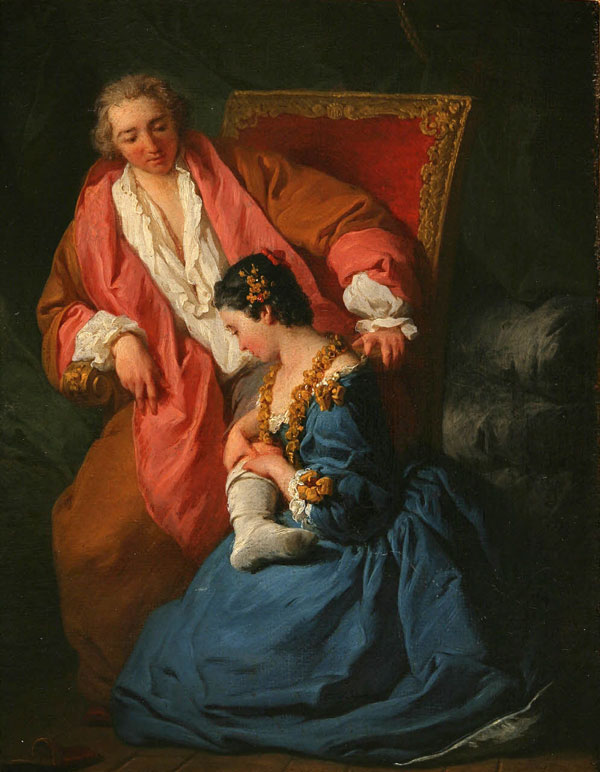
Fig. 10. Pierre Subleyras, Amorous Courtesan, c. 1735. Oil on panel, 30 x 23 cm. Musée du Louvre, Paris. Image in the public domain. Source: Wikimedia Commons.
That Camillus does not like advances from women would not surprise Casanova’s contemporaries, since in 1758 Rousseau naturalized the gendered roles of “attacker” and “defender,” asking what would become of the human race if women were the aggressors? Appealing to reproduction rather than pleasure, he concluded that women might attack when a man could not perform (i.e., achieve erection), thus thwarting reproduction. The fate of humanity would hang in the balance. Woman’s job, Rousseau insisted, was to inflame male desire by pretending to resist.[46] According to some contemporaries, the figure Jean-Baptiste Le Prince depicted in Fear (1769) represented one of these “unnaturally” aggressive women. The critic for the Mémoires secrets concluded that the painting’s title hid its true subject. Noting that nothing except the facial expression expressed fear, the reviewer saw a veritable Potiphar’s wife.[47] Pointing to the breakfast set for two, the overturned armchair, the reach of the woman’s body toward the door, and the dog apparently barking at someone in flight, he concluded that the image represented a reckless lover who after violating the natural order of attack and defense lacked “the courage to admit her guilt,” hiding “her shame and despair as fear.”[48]
Neither amorous courtesan nor aggressive woman resembles La Charpillon, whom Casanova encounters in London. He later recalled that it was on “that fatal day at the beginning of September, 1763 that I began to die.”[49] She is a stunning beauty, and he brokers a deal with her family to take her as his mistress. The account presents the family as making a financial calculation in which he pays for her services. But La Charpillon has little taste for sex with Casanova; she mocks his prowess, taunts him, and connives not to deliver what he most desires. This treatment provokes a response recalling his youthful desire to strangle Bettina, but now results in actual violence: “In such a situation love easily becomes rage. I lay hold of her as if she were a bolt of goods….my hands becoming claws, I count on the most brutal violence on my part… having grasped her neck in one hand, I felt a strong temptation to strangle her.”[50] He sees her as provoking him, and repents only after she falls ill and he imagines himself responsible. The scene turns maudlin when he goes to the Thames, pockets filled with lead balls, to drown himself.[51] Sir Wellbore Ellis Agar, an aristocratic rake, saves Casanova, and invites him to assuage his melancholy with a bit of libertinage. Casanova, alas, cannot perform as the lover he thinks he is. Thus in London, he finds himself repeatedly vulnerable to a fading reputation, fearing impotence, needing money, and worrying over recurring syphilis.
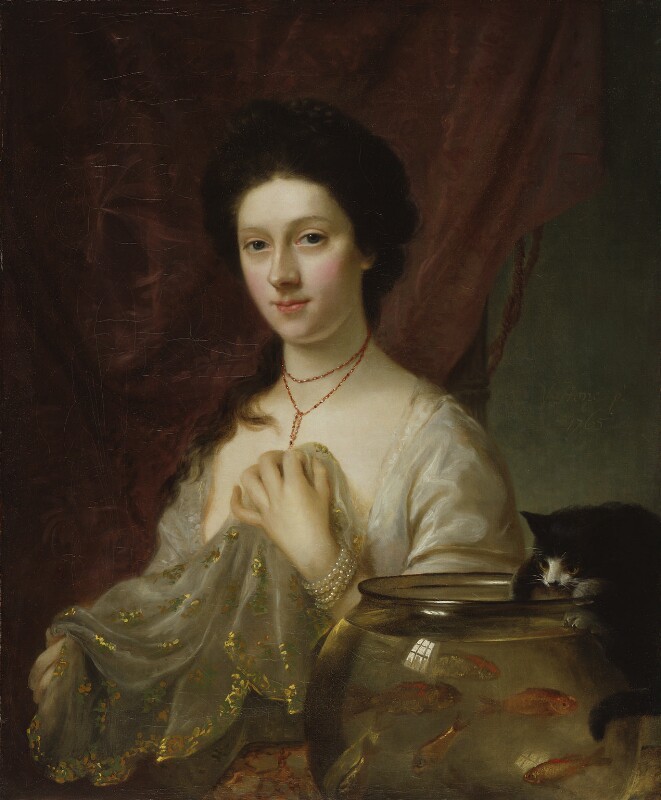
Fig. 11. Nathaniel Hone, Portrait of Kitty Fisher, 1765. Oil on canvas, 74.9 x 62.2 cm. Bequeathed by John Baring, 2nd Baron Revelstoke, 1929. National Portrait Gallery, London. Photo © National Portrait Gallery, London.
In the midst of his entanglements with La Charpillon, Casanova meets the courtesan Kitty Fisher, whose celebrity circulated through engraved and painted portraits such as that by Nathaniel Hone (Fig. 11).[52] This clever work, completed at the height of her popularity in 1765, puns on Kitty’s name by including a kitten fishing in a goldfish bowl. Reflected on the bowl is a window at which a crowd gathers presumably to glimpse the celebrity. In describing the courtesan, Casanova opines that she is going out of fashion and also excuses himself for not trying to buy her love (although he is assured he can have it for a song). He justifies his decision: “She spoke only English. Accustomed to loving only with all my senses, I could not indulge in love without including my sense of hearing.”[53] Yet this hardly rings true as Casanova did indulge in sex with women with whom he did not share a language. Most notable in this regard is the Russian serf whom he names Zaire after purchasing her services from her father.[54]
Casanova’s travels to Russia remind us that his life became increasingly peripatetic, which may account in part for the kinds of love he pursues. While keeping Zaire, he meets La Valville, an actress he takes as his mistress through a financial transaction in which she functions as her own agent. He deems her among the “French girls who have sacrificed themselves to Venus; […] they have neither passion nor temperament and so they do not love. […] Able to break off a liaison at will, they enter into one with the same facility and always with a smiling humor.”[55] Thus she appears as Casanova’s perfect match. They leave Russia together and travel until they part amicably because “we had attached no importance to love; but we felt only the most sincere friendship for each other.”[56] As Casanova continues to Madrid and Naples he takes other mistresses, arranging with a father for the services of his daughter Doña Ignacia in Madrid and with the aunt of La Callimena (Agata Carrara) for her services in Naples.[57]
In the later chapters of his History, Casanova enters various affairs, but only one seems satisfying. In Rome he once again finds Lucrezia and their daughter Leonilda who has married a Marchese. Leonilda wants a child but her seventy-year-old, gout-ridden husband cannot impregnate her. She believes that another man could perform the service for her, and the Marchese might believe the child was his. With Lucrezia turning a blind eye, Casanova attempts to impregnate Leonilda, presumably to give her what she most desires. It may be in preparation for this incident that he earlier expresses his sentiments about incest. After hearing the story of a man who “had the misfortune to fall in love with his daughters and his granddaughters,” he writes, “I thought to myself that in a state of nature, the thing would not arouse horror and that all the horror that was felt for it came only from education and force of habit.”[58] Spouting Rousseau on the state of nature, Casanova justifies himself in advance of reporting the act.[59]
In viewing self-interest and the pursuit of pleasure as his touchstones, Casanova resembles the Marquis de Sade, who decried the strictures that society put on natural impulses. Yet unlike Sade, Casanova does not take to its logical and terrifying conclusion the idea that all impulses are justifiable in the eyes of nature, which far from having a moral intention is cruelly indifferent and operates on a principle of power. Although his pursuit of pleasure rarely, if ever, seems Sadean, Casanova makes no apologies for his inclinations and characterizes the search for pleasure as his “life’s work.” Yet at times that pursuit appears pathological in eighteenth-century terms. His particular susceptibility to melancholia was tied to mental disease and his insatiable desire for orgasm to satyriasis. Even writing his memoirs is an act of narcissistic self-pleasuring, for he “finds no pleasanter pastime than to converse with myself about my own affairs.”[60] Casanova admits he is the chief cause of his misfortunes, but nonetheless rejoices in his “ability to be my own pupil and in my duty to love my teacher.”[61]
Why would a memoirist who so clearly loved himself and his work, and who reveled in vicarious jouissance, end his pleasure by stopping his story abruptly at 1774? He began his History in 1789, presumably to avoid boredom; in 1796, he reworked the manuscript; and in 1797 he wrote the preface, treating his story as finished. Was Casanova’s health giving way? Did 1774 represent some boundary he did not care to cross? Or did he simply find that this pastime no longer gave him pleasure, and he moved on to romance other pursuits?
Mary D. Sheriff was an art historian of eighteenth-century France and W.R. Kenan, Jr. Distinguished Professor of Art History at University of North Carolina at Chapel Hill, NC
[1] See Frederick Ilchman, Thomas Michie, C. D. Dickerson III, and Esther Bell, eds., Casanova: The Seduction of Europe (Boston: Museum of Fine Arts, 2017).
[2] Giacomo Casanova, Preface, History of My Life, translated by Willard R. Trask (New York: Harcourt, Brace & World), vol. 1, 36.
[3] For an analysis of the painting, see Mary D. Sheriff, Fragonard: Art and Eroticism (Chicago: University of Chicago Press, 1990), 185-202.
[4] There is documentary evidence to support the reality of some of Casanova’s affairs. Primary material is held, for example, in Státní Oblastní archiv v Praze-State Archives, Prague; Duchcov Castle, Czech Republic; and Archivio di Stato di Frari, Venezia-Frari State Archives, Venice. There are also several published editions of his correspondence.
[5] Preface, History of My Life, vol. 1, 29. I borrow the term “vicarious jouissance” from Jay Caplan, “Vicarious Jouissances: Or Reading Casanova,” MLN 100:4, French Issue (September 1985), 803-814.
[6] The trysting at country estates is explicated in René Demoris, “Les fêtes galantes chez Watteau et dans le roman contemporain,” Dix-huitième siècle 3 (1971), 337-357. Baudouin’s title comes from Nicolas de Launay’s engraving after the gouache. The scene takes place under Thomas Regnaudin’s statue of Saturn Kidnapping Cybèle, Allegory of Earth, which stood in the Tuileries garden. Guillaume Faroult, ed., Fragonard amoureux: Galant et libertin (Paris: Musée du Luxembourg, Senat), 134. Note here that the only witness is a lady’s lapdog, who, far from faithful companion, acts as a surrogate viewer and holds a place for anyone caring to look.
[7] In Paris, prostitutes would be sent to the Salpêtrière, an event Etienne Jeaurat shows in his 1755 painting La conduite des filles de joie à la Salpêtrière: le passage près de la porte Saint-Bernard (Musée Carnavalet, Paris). The Salpêtrière was originally a gunpowder factory and in the eighteenth century became a place of incarceration for prostitutes, the mentally disabled, the criminally insane, and the poor.
[8] Casanova, History of My Life, vol. 2, 274-275. For a discussion of this commerce in Venice and Casanova’s involvement, see Larry Wolff, Paolina’s Innocence: Child Abuse in Casanova’s Venice (Stanford: Stanford University Press, 2012), 46-50.
[9] Casanova, History of My Life, vol. 1, 26.
[10] On the age of consent, see Stephen Robertson’s excellent review, “Age of Consent Laws,” Children and Youth in History, http://chnm.gmu.edu/cyh/teaching-modules/230. The age of consent was, by our estimation, quite low. The French Napoleonic code in 1791 established an age of consent as 11 years. Age of consent was often calibrated to when the child reached sexual maturity and the body was ready for sexual relations. See also Wolff, Paolina’s Innocence, 45-55 and 213-221.
[11] Casanova, History of My Life, vol. 1, 63, 65. In recalling his affair with Bettina, Casanova arrives at a conclusion that would not have been evident to him at the time: “But in what school had she learned to know the human heart so well? By reading romances. It may be that reading some romances causes the ruin of many girls; but it is certain that reading good ones teaches good manners and the practice of social virtues” [History of My Life, vol. 1, 80]. Here he repeats both the moralist line (that romances ruined girls) as well as that of novelists (that romances were instructive). And he compares his impatience in awaiting Bettina to an episode in Ariosto’s Orlando Furioso, a romance epic he cites repeatedly in his memoirs: “We think situations of this sort are exaggerated when we read them in romances, but such is not the case. What Ariosto says of Ruggiero waiting for Alcina is a masterly depiction from nature” [History of My Life, vol. 1, 67]. Representations are on his mind and help form the way the writes about his own loves. For a discussion of the relation of this incident to contemporary theories of the novel and instances of female seduction, see Ted Emery, “Casanova, the Novel, and the Woman as Desiring Subject: The Case of Bettina,” Studies in Eighteenth-Century Culture 33 (2004), 277-292.
[12] Casanova, History of My Life, vol. 1, 66. For a summary discussion of melancholia as related to eighteenth-century medical discourse, notions of creativity, and erotic attachment, see Mary D. Sheriff, Moved by Love: Inspired Artists and Deviant Women in Eighteenth-Century France (Chicago: University of Chicago Press, 2004), 36-38. Discussions of melancholia enter a wide range of eighteenth-century texts, including Jean Le Rond d’Alembert and Denis Diderot, eds., Encyclopédie, ou Dictionnaire raisonné des sciences, des arts et des métiers, par une société des gens de lettres, 17 vols. (Paris: 1751-1780); Pierre Pomme, Traité des affections vaporeuses des deux sexes (Paris: Desaint et Saillent, 1760); Nicolas Chambon de Montaux, Des maladies des femmes, 2 vols. (Paris: Hotel Serpente, 1784); and Samuel-Auguste-David-Tissot, De la santé des gens de lettres et des valétudinaires, in Oeuvres complètes de Tissot (Paris: Allent, 1809). Philippe Pinel systematized the discourse on melancholy in his 1813 Nosographie Philosophique; ou La méthode de l’analyse appliquée a médicine, 3 vols. (Paris: J.A. Brosson, 1813), which reprises his earlier Traité médico-philosophique sur l’aliénation mentale of 1801. The classic study of melancholy is Raymond Klibansky, Erwin Panofsky, and Fritz Saxl, Saturn and Melancholy: Studies in the History of Natural Philosophy, Religion and Art (London: Nelson, 1964). In De l’homme et de la femme considerés physiquement dans l’état du mariage, 2 vols. (Lille: J.-B. Henry, 1778), the author Lignac calls the melancholic man a dangerous seducer of women because he is artful at creating illusions (vol. 1, 37).
[13] Antoine Coypel, Discours prononcez dans les Conférences de l’Académie Royale (Paris: Jacques Collombat, 1721), 173-174.
[14] The suggestive title is based on J.P. Le Bas’s engraving, and the image refers to a pastoral pantomime, Les vendanges de Tempé, composed by Boucher’s friend Charles-Simon Favart. Other works such as The Autumn Pastoral (London: Wallace Collection, 1759) are also derived from this pantomime and some show the boy feeding the girl. In related works, cherries sometimes replace the grapes. Alaister Laing, François Boucher (New York: Metropolitan Museum of Art, 1986), 233-237; see also Melissa Hyde, Making Up the Rococo: François Boucher and His Critics (Los Angeles: Getty Research Institute, 2006), 155, 187.
[15] Ovid, Metamorphosis, translated by Frank Justus Miller, 2 vols. (Cambridge, MA: 1999), book 6, verse 125.
[16] Both men and women enjoyed the ribald humor and transgressive nature of clerical dalliances. The Comtesse de Verrue, for example, had a taste for scandalous tales of religious life including Abbé Du Prat, Vénus dans le cloître ou la religieuse en chemise (1719); François Chavigny de La Bretonnière, Les entretiens de la grille, ou le moine au parloir, Historiettes familières (1682); and Les amours de Sainfroid, jésuite et d’Eulalie, fille dévote (1729). On Verrue’s library, see Charles Blanc, Le Trésor de la curiosité, tiré des catalogues de vente de tableaux, dessins, estampes, livres…, 2 vols. (Paris: Chez Jules Renouard, 1857), vol. 1, 11.
[17] The work was published anonymously in 1741, but it has been attributed to Jean-Charles Gervaise de Latouche, who was a writer and also a lawyer at the Parlement de Paris. The scene recalls the bet made in another erotic novel that also illuminates the mischief of clerics. The eponymous character in Thérèse philosophe (1748) is a reader of the Portier de Chartreux and other erotic literature. However, she fears the dangers of pregnancy and so refuses even coitus interruptus with her lover. He proposes a bet: she will agree to his wishes if she can refrain from masturbating for two weeks while reading erotic books and looking at the images in them. Thérèse loses the bet, but all ends happily as she and her love continue their affair without a worry and without children for the next ten years. See Thérèse philosophe in Romans libertins du XVIIIe siècle, ed. Raymond Trousson (Paris: Robert Laffont, 1993).
[18] Examples of these are to be found in The Horvitz Collection, some of which are reproduced in Melissa Hyde and Mary D. Sheriff in collaboration with Alvin L. Clark Jr., Becoming a Woman. French Art from The Horvitz Collection (exh. cat., The Harn Museum of Art, University of Florida, 2017), 82-83.
[19] The dual connotations of ecstasy and ravishment played on the sexual and the religious. In one scene of Thérèse philosophe, for example, Mademoiselle Eradice is in love with Father Dirrag, who tricks her into sexual intercourse by presenting it as a spiritual exercise. After flagellating Mlle. Eradice, he penetrates her with what he calls the “cord of Saint Francis.” Throughout the encounter he encourages her to experience orgasm as religious exaltation. See Sheriff, Moved by Love, 94. For definitions of ecstacy and ravishment see Denis Diderot, “Ravir,” Encyclopédie, vol. 13, 832; and “Ravir” and “Extase” in Dictionnaire de l’Académie française, 4th edition (1762).
[20] Casanova, History of My Life, vol. 1, 118; and Wolff, Paolina’s Innocence, 158-159.
[21] Interest in young women’s burgeoning sexuality found its expression in medical literature as well as art and literature. P. Virard, in his Essai sur la santé des filles nubiles (London and Paris: Chez Monory, 1776), defines “filles nubiles” as those ready to be married, that is to say, to be fertile and become mothers. In Joseph-Nicolas Guyot’s Répertoire de jurisprudence, tome VII (Paris: Chez Visse, 1784) we find that women become “nubile” earlier than men and the law fixes the age of puberty at 12 years. G. Jouard’s later Nouvel essai sur la femme considérée comparativement à l’homme (Paris: 1804) summarizes the wisdom of the eighteenth century. The author rhapsodizes over the physical changes at puberty and the signs that announce to a young girl that she is destined for motherhood (172). When Greuze represented adolescents as becoming sexually aware, he often did so under the cover of morality. Upon viewing his Girl with a Dead Canary (1765: National Gallery of Scotland), for example, the critic Denis Diderot interpreted the image as representing a deflowered innocent sorrowing over her loss of virginity. In responding to the painting, Diderot imagines “comforting” her, as he calls the painting (and presumably the girl) “delicious…delicious, delicious.” Denis Diderot, Diderot on Art: The Salon of 1765 and Notes on Painting, edited and translated by John Goodman (New Haven: Yale University Press, 1995), 97-98.
[22] Casanova, History of My Life, vol. 1, 119.
[23] By the time Casanova was writing, satryiasis had been firmly distinguished from priapisme, which was marked by continual erection. While the Encyclopédie entry treated the two as similar, Pinel summed up the difference by calling satyriasis an insatiable desire for the pleasures of love that sometimes enflamed the genitals, and priapisme the state of having uncomfortable erections without pleasure. The key characteristic of satyrisis remained consistent, and Casanova points to it: the disease demanded repetition of an act that should have satisfied desire. Both the earlier and later considerations listed moral causes of the disease: debauchery, masturbation, reading obscene literature, viewing obscene pictures and libertine conversation. See the entries on “Satyriasis” and “Masturbation” in the Encyclopédie.
[24] Casanova, History of My Life, vol. 1, 137.
[25] Other works that express the mutual interests of love and wine include Antoine Coypel’s The Alliance of Bacchus and Love (c. 1702) and Claude Gillot’s Feste de Bacchus, célebrée par des Satyres et des Bacchantes (before 1728). Each suggests, in the attached poem, that there has been an eternal war between Bacchus and Cupid, which has now ended. Coypel shows Venus giving her blessing to the alliance, while Gillot shows Bacchus presiding over a fete that celebrates love.
[26] Casanova, History of My Life, vol. 1, 138.
[27] Casanova, History of My Life, vol. 1, 139. For a discussion of woman’s desire in Casanova, see Chantal Thomas and Noah Guynn, “The Role of Female Homosexuality in Casanova’s Memoirs,” Yale French Studies 94, special issue on Libertinage and Modernity (1988), 179-183.
[28] For an excellent analysis of these works that considers both possibilities, see the chapter dedicated to the theme of Diana and Callisto in Hyde, Making up the Rococo, 203-222.
[29] The tribade is defined in Samuel Tissot, “L’Onanisme, Dissertation sur les maladies produites part la masturbation,” in Collection des ouvrages de Médecine, vol. 4 (Paris: Pierre-François Didot le jeune, 1769), 46-53. The term appears in the 4th edition of the Dictionnaire de l’Académie française as a “femme qui abuse d’une autre femme,” and is defined simply in the Encyclopédie as “femme qui a de la passion pour une autre femme; espèce de dépravation particulière aussi inexplicable que celle qui enflamme un homme pour un autre homme” (16: 617). On the fears of older sisters and servants transforming women into tribades, see M.D.T. Bienville, La Nymphomanie ou traité de la fureur utérine (Amsterdam: Chez Marcmichel Rey, 1778), 131, 140-143.
[30] As translated by John Goodman in Diderot on Art, II, The Salon of 1767 (London: Yale University Press, 1995), 164-165.
[31] Erica Rand, “Diderot and Girl Group Erotics,” in Eighteenth-Century Studies 25:4 (Summer, 1992), 495-516. The essay teases out all the contradictions in Diderot’s account and comments on the difference between his reception of Baudouin’s painting and other commentaries on it.
[32] Casanova, History of My Life, vol. 1, 142.
[33] Casanova, History of My Life, vol. 1, 276, 291.
[34] For a consideration of a group of Fragonard’s works that show erotic combat and its happy conclusion, see Mary D. Sheriff, “Aux prises avec le désir,” in Fragonard amoureux: Galant et libertin, edited by Guillaume Faroult (Paris: Réunion des musées nationaux, 2015), 41-49. The Bolt is analyzed in Pierre Rosenberg, Fragonard (New York: Metropolitan Museum of Art, 1988), 481-85; Faroult, Jean-Honoré Fragonard, Le Verrou (Paris: Réunion des musées nationaux/Musée du Louvre, 2007); and Faroult, Fragonard amoureux, 208-211.
[35] Casanova, History of my Life, vol. 3, 264. It was not until 1763 that the minimum age of marriage was fixed at 16. Prior to this date, the church accepted the marriage of girls aged 12 or more and boys aged 14 or older. In addition, a dispensation or licence could be obtained from a bishop, which allowed marriage at a younger age.
[36] Prior to the Council of Trent (1545-1563), the Catholic Church considered a marriage vowed secretly by two people of marriageable age as legal and binding. The council dictated that the free exchange of vows was still required for a legal marriage but that the exchange had to take place before witnesses including a priest. See Merry Wiesner-Hanks, Christianity and Sexuality in the Early Modern World: Regulating Desire, Reforming Practice, 2nd edition (London: Routledge, 2010), 134-135. These stipulations were not always fully enforced. Thus the secret “marriage” of Casanova and Caterina Capretta was not fully legal, but they could have viewed it as valid.
[37] Casanova, History of My Life, vol. 4, 72. Among others, Diderot portrayed the scene of a mother superior seducing a young nun in his pseudo-memoir La religieuse, published posthumously in 1796.
[38] Casinos were private spaces, places where men and women mixed together for conversation and other activities. They were banned in 1744, but nonetheless continued to proliferate. Casinos were often thought of as small places of amusement. For an analysis of casinos, see Mariana d’Ezio, “Sociability and Cosmopolitanism in Eighteenth-Century Venice: European Travellers and Venetian Women’s Casinos,” in Sociability and Cosmopolitanism: Social Bonds on the Fringes of the Enlightenment, ed. Scott Breuinger and David Burrow (London: Routledge, 2012), 47-58. M.M., however, used her casino for erotic activities, rather than polite sociability.
[39] Casanova, History of My Life, vol. 4, 38.
[40] Casanova, History of My Life, vol. 4, 57-58. The scene recalls the bet made in another erotic novel that also illuminates the mischief of clerics.
[41] The title of the work comes from the Goncourts, who say its owner, M. de Villars, called it Le feu aux poudres. Rosenberg, Fragonard, 162. Mettre le feu aux poudres can be generally taken to mean igniting any volatile situation, but it retained an erotic connotation in the eighteenth century. We see one Amor raising the curtain, another putting his torch to her genitals (which are modestly occluded by the smoke and flame), and a third touching her nipples with his flame.
[42] Casanova, History of my Life, vol. 4, 33, 69-70.
[43] Casanova, History of my Life, vol. 4, 71-75. He earlier had the same artist make a portrait for Caterina, who, when she saw M.M.’s gift, recognized the affair between her lover and M.M.
[44] Casanova, History of My Life, vol. 7, 224, 227.
[45] Suzanne Pucci, “Snapshots of the Family: Picture Perfect,” in Esthetics of Intimacy/Esthétiques de l’intime, special issue of L’Esprit Créateur (Spring 2004), 68-82; and Pucci, “The Nature of Domestic Intimacy and Sibling Incest in Diderot’s ‘Fils Naturel’,” Eighteenth-Century Studies 30:3 (Spring 1997), 271-287.
[46] Jean-Jacques Rousseau, Lettre à Mr. D’Alembert sur les Spectacles, ed. M. Fuchs (Geneva: Droz, 1948), 112. One can gauge the staying power of Rousseau’s argument by turning to the fifth memoir of Cabanis’s 1805 treatise Rapports du physique et du moral de l’homme. There the physiologist explains how Rousseau has very well shown that to ensure the perpetuation of the species, “the man must attack and the woman must defend herself. The man must choose the moments at which the need for attack makes itself felt, at which this very need ensures success.” (Pierre-Jean-George Cabanis, On the Relations Between the Physical and Moral Aspects of Man, trans. Margaret Duggan Saidi, ed. George Mora, intro. George Mora and Sergio Moravia, 2 vols. (Baltimore and London: Johns Hopkins University Press, 1981), vol. 1, 234.
[47] Genesis 39. The wife of the Egyptian Potiphar, who employed Joseph. She falsely accused Joseph of attempted rape.
[48] “Lettre I. Sur les peintures, sculptures et gravures exposées au Salon du Louvre le 25 août 1777,” in Les Salons des ‘Memoires secrets’ 1767-1787, ed. Bernadette Fort (Paris: Ecole nationale supérieure des beaux-arts, 1999), 175-176.
[49] Casanova, History of my Life, vol. 9, 272. La Charpillon was Marie Anne Geneviève Augspurgher.
[50] Casanova, History of My Life, vol. 9, 291.
[51] Casanova, History of My Life, vol. 9, 319-320.
[52] For a discussion of Kitty Fisher’s portraits and her celebrity, see Marcia Pointon, “The Lives of Kitty Fisher,” British Journal for Eighteenth-Century Studies 27 (2004), 77-97. Pointon (p. 81) mentions that Hone’s portrait, showing her with a langorous expression and in a state of semi-undress, may refer to Sir Peter Lely’s Hampton Court Beauties.
[53] Casanova, History of My Life, vol. 9, 308.
[54] Casanova reports that he teaches her some Italian, but that it takes several months. History of My Life, vol. 10, 113-114.
[55] He further notes that such French girls “want to be kept, and the title of mistress is far more flattering to them than that of wife.” History of My Life, vol. 10, 152-153.
[56] Casanova, History of My Life, vol. 10, 157-158.
[57] Casanova, History of My Life, vol. 10, 322-24; vol. 11, 294-295.
[58] Casanova, History of My Life, vol. 11, 178.
[59] Carol Blum articulates Rousseau’s view of incest and its relation to other concerns in Strength in Numbers: Population, Reproduction, and Power in Eighteenth-Century France (Baltimore: The Johns Hopkins University Press, 2002), 122-131.
[60] Casanova, History of My Life, vol. 1, 28.
[61] Casanova, History of My Life, vol. 1, 38.
Cite this note as: Mary D. Sheriff, “Casanova, Art, and Eroticism,” Journal18 (January 2018), https://www.journal18.org/2367
Licence: CC BY-NC
Journal18 is published under a Creative Commons CC BY-NC International 4.0 license. Use of any content published in Journal18 must be for non-commercial purposes and appropriate credit must be given to the author of the content. Details for appropriate citation appear above.
